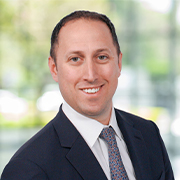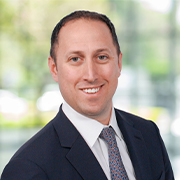State of the Consumer, Uncertainty and Opportunity
Hosts: John Kernan, Managing Director, Consumer - Retail & Consumer Brands Research Analyst, TD Cowen, Max Rakhlenko, Director, Consumer - Retail & Fitness Research Analyst, TD Cowen, Andrew Charles, Managing Director, Consumer – Restaurants Research Analyst, TD Cowen
TD Cowen Analysts John Kernan, Max Rakhlenko, and Andrew Charles sit down at TD Cowen's 9th Annual Consumer Conference to discuss their key takeaways from the conference.
This podcast was recorded on June 3, 2025
Speaker 1:
Welcome to TD Cowen Insights, a space that brings leading thinkers together to share insights and ideas shaping the world around us. Join us as we converse with the top minds who are influencing our global sectors.
John Kernan:
I'm John Kernan, TD Cowen's Retail and Consumer Brands Analyst. We are live at the ninth annual Future of the Consumer Conference. I am here with my colleagues Max Rakhlenko, TD Cowen's Hardlines and Wellness Analyst, and Andrew Charles, our Restaurant Analyst.
Guys, let's start with the state of the consumer. What have you learned recently?
Andrew Charles:
Thanks, John. Andrew Charles. So look, we're hearing the consumer after a more challenged April has began to find their footing a bit in May, but there is quite a bit of concern amongst the return and the potential resumption of tariffs come July, which unfortunately falls in the quarter to date timeframe for restaurants. And so it feels like we're in a sit on your hands type moment, but it seems like we are past the peak pessimism in the month of April.
Max Rakhlenko:
Yeah, Andrew, I would actually completely agree with what you're saying. It does feel like things are sort of improving from the bottoms, but overall the consumer does remain quite mixed. And especially with tariffs now starting to flow through with prices going higher in certain circumstances, it's definitely a wait and see mode for a lot of customers out there.
Andrew Charles:
John, you look across the broader consumer as well. Love to know what you're thinking and what you're hearing.
John Kernan:
Yeah, it's choppy, but brands with great product cycles in apparel and footwear are showing strength. And based on management commentary at the conference and recent checks we've done, May strengthened pretty significantly from March and April.
Max Rakhlenko:
So it really feels idiosyncratic, I would say. I think the better operators out there are certainly able to take advantage of the situation while at the same time it does feel like the less well capitalized and smaller and maybe less operationally efficient operators are the ones that are struggling a little bit more.
John Kernan:
The low income consumers showed real weakness in Q1, but the higher income consumers, which top 10% of income earners are 50% of total PCE. And those consumers are in good shape right now.
Max Rakhlenko:
Plus we've seen the stock market improve nicely off the April bottom, so you are getting the benefit of the wealth effect with the S&P more or less flattish for the year now.
Andrew Charles:
From a restaurant side, we're looking at consumer confidence. I really think that's telling the complete picture for the restaurant sector and the improvement we've seen in May I think is helping to help us better understand why the trends in the industry seem to be getting better abruptly.
John Kernan:
Max, let's jump back to you. Thoughts from the conference on tariff risk?
Max Rakhlenko:
I would frame it two different ways. One is there's certainly a lot of risk, but it seems like companies have been preparing for this for quite some time. None of this is really new. What is new is the magnitude, but companies have been working through tariffs since the first Trump administration, so they've got plans, they've got teams, and it's something that they've been focusing on. So therefore this is really more of a continuation and not necessarily a shock.
What is the shock is the magnitude. So with that, what you are seeing is it's really a team effort. You're seeing the manufacturers have to eat some of the tariff, the retailers trying to figure out what to do with margins, and then we are going to start seeing prices begin to accelerate. We saw in 1Q prices increase a little bit and I think that that's going to be more of a continuation as the next several quarters progress.
John Kernan:
Andrew, restaurants don't face a significant a tariff risk, but how does the consumer respond within restaurants to the tariffs?
Andrew Charles:
Yeah, John, it's a good question. So you're right, because of the exemption with Mexico as well as with Canada around the imports of food, we're seeing less in ingredients. We see less of a direct impact to the restaurant margins from this.
The big unknown, the million-dollar question as you just pointed out, is really around the impact of the consumer psyche. And so this is something that was front and center on investors' minds as well as consumer minds during the April timeframe. And the way it's been described to me from the operators is more about the risk that the US is going into recession rather than the fact that the market's taking it back. The consumer thinking we're going to recession, they're going to clam up as restaurants are naturally a place that people cut when they eat.
What I think has been really interesting for the restaurant industry is that it appears that quick service is really not being a beneficiary of trade down right now. Conventional wisdom would tell you, and this is very clear in the second half of 2008, that they trade down from full service into quick service was something that was pretty apparent. We just don't seem to be seeing that today. And so while there is concern about the consumer, the application of that has certainly been not as expected in the restaurant industry.
Max Rakhlenko:
Andrew, what about overall eating out versus eating in? Have you seen any changes in those trends?
Andrew Charles:
Yeah, so Max, I would say that the big difference here around eating in is that the trends there, as Rob Moskow has been pointing out, concerns around GLPs and the impact that's had on snacking, we're not seeing that as much on restaurants. And so while it was hard to untangle right now is the consumer pulling back their restaurant visits versus eating in as it's not apparent we're seeing trade down in the industry. Maybe the best answer to it is really around the fact that restaurants need a clear catalyst to get consumers in the door right now is they can't just rely on the fact that people are going to be eating out.
John Kernan:
What I would add on tariffs is that we still don't know where Vietnam is going to land. That's huge for my sector. I think best case scenario is 10% at this point. So that is what management teams have assumed for most part in guidance. But if we come near 20%, that's a negative catalyst.
There doesn't seem to be a consensus on how much footwear and apparel pricing moves higher in the back half, maybe 5% to 10%, but that math can't offset a 10% tariff. But we held meetings with Matt Powell, formerly of NPD, and Surkana today, and he thinks tariffs are creating a cloud over the industry and there's little consensus how pricing will come through. And then the largest footwear company out there we're hearing is backing off on price increases for the back half. So not really consensus there.
The other thing I would say is guidance could prove conservative for second half if there's, that's a big, but if current tariff rates hold and the consumer isn't as bad as feared. I think that's a big thing, consumer could get better in the second half. And right now consensus seems to be fairly negative by consumer.
Andrew Charles:
Yeah, John, it's a good segue to my next question. Max, feel free to chime in as well. Are you hearing anything around what the conventional wisdom is around if tariffs are reinstated in July, how long they'd stick for? I mean the conventional wisdom right now, we talk to operators and folks in the field, feels like it's around six months or so is how long they'd be in effect for. And look, I know it's impossible to tell, but just looking to better understand what you're hearing on the conventional wisdom for how long they'd stick around for?
Max Rakhlenko:
The conversations that we've been having have really been much more about the magnitude than the length of duration. It feels like if they go up, they probably do stay there for some elongated period of time. But the problem is that even if they come down eventually, retailers are going to start to take price and typically prices only go in one direction. So whether they come down six months, nine months, two years from now, at the end of the day, once people take price, you really don't see too many circumstances where you start to go backwards as well. So once prices go up, they sort of remain there. So it ultimately could be a little bit of a moot point. So it's really about the magnitude.
And then before really we get too far along, I do think that there needs to be a conversation about holiday because holiday is going to be the first big period where I think that prices could have some impact on the consumer. Back to school feels like it's going to be fine, but it does seem like there's some concerns around price levels in the holidays. What do you think, John?
Andrew Charles:
Yeah, elasticity's a major concern here, particularly for low to mid-income consumers. So we don't really know how that consumer's going to react to large scale price increases in discretionary categories. Most of my sector is very discretionary, so it's a concern.
John Kernan:
What are the biggest trends in your sector right now? What did the conference confirm?
Andrew Charles:
So we hosted an automation panel that I really thought was interesting, and so we hosted two providers of voice AI for application at the drive-through as well as for phone in orders. And you combine that as well with a robotics provider for kitchen equipment as well. And so the scaling that we're seeing of the software in particular around voice AI, and at a later stage coming to the kitchen, robotics is naturally easy to scale software relative to hardware. I think we're going to see quite a bit of disruption in the restaurant industry from this. So it's really interesting learnings and the scale at which they're seeing this for technology and consumer adoption as well of AI via ChatGPT and other gen AI application. I'm really excited to see where this goes for the restaurant industry.
Max Rakhlenko:
On my end, I think the theme that we've seen and something we've been really focusing on is it's really about the getting bigger. And when there's disruptions, there's always market share opportunities for your bigger operators that have better access to capital, cheaper capital, greater resources at their fingertips. And it really feels like during disruption is when the bigger players really start to increase their market share. And it feels like that's where we're going. It feels like we're just at the start, but the bigger operators are seeing more disruption. So ultimately there is going to be another side to this when the environment is going to get better, when the economy is going to improve, and we get the sense that the better operators could find themselves in quite a different position by that point versus where they are today.
John, what about you?
John Kernan:
Yeah, we talked to three management teams today and one thing that is really resonating is competition in athletic footwear. The upstarts are gaining share, but product cycles can beat the macro choppiness. And we saw two companies raise top line and bottom line guidance post Q1, that really stood out. So the consumer response to innovation and product and specialty retail and we expect that to continue.
Max Rakhlenko:
And maybe just on that topic, a question for both Andrew as well as John, just this big sort of push towards wellness. Andrew, you had some companies at the conference that are really in that ecosystem, and John as well with some of the footwear companies that you look at. But as you think about the wellness cycle, where do you think we are and how do you think that that's going to evolve? Because younger generations are much healthier and overall it feels like the athleisure, the wellness cycle is just getting started.
John Kernan:
Don't forget about older demographics. The boomers are spending a lot of money on my categories, in footwear and apparel, related to wellness. So I think it's a multi-generational trend that has a lot of durability.
Andrew Charles:
It's oscillating a bit more in the restaurant space. We've had companies that skew more to wellness, calling the consumer fragile. It hasn't been apparent that they're immune from what we're seeing in the overall restaurant industry right now. So my view of wellness is that I think of it more as transparency in the restaurant industry that, look, going out to eat is going to be an indulgence. It really comes down to which concepts can really have the halo around the fact that what they're providing makes the customer feel good. John, I use the athleisure analog a lot in my industry, that when folks work from home and they're on Zoom calls, sure they might be wearing button downs in the camera, but they're probably wearing sweatpants below. And because they may not have gone to the gym but they feel good about themselves, what they're doing and that this is the path least resistance.
So right now it's unclear that the wellness trend is really shining bright and we see this sometimes. During periods of more macro stress, it's not uncommon to see consumers usually eating a bit more indulgently. So while I have no doubt that the shift to wellness and consumers wanting to know more about what's in their food is a trend that we're going to see for quite some time, there's more cyclicality to that trend that we're seeing in the current backdrop.
John Kernan:
Absolutely. The casualization trend has major legs. Max, we're going to finish this up with what were your biggest takeaways from the conference so far?
Max Rakhlenko:
I think it all sums up in one word and that's just unknown. Management teams aren't really sure where the macro is going to take them anywhere past 2Q. So everyone is focused on various mitigation strategies. Everyone is taking various paths on price and increasing price and trying to operate more efficiently. But at the end of the day, I think the biggest theme that stands out to us is there's just very little clarity of what even the second half of 2025 looks like, let alone thinking about 2026. So it's sort of living one day, one quarter at a time.
Andrew Charles:
Max, you said one word be unknown. I'll say one word, it's uncertainty. It's definitely the forward-looking component here is incredibly challenging for management teams to articulate. What I would say is the tone is definitely around the fact that, to look at this more glass half full, April trends improved generally for the industry into May combined as well with the fact the consumer seems to be getting more used to the news cycle as well as the changing news as well, that there's hope that this is going to be something that will stick into the back half of the year. But whether you say unknown or uncertainty, I think we're talking about the same thing.
John, I would love to know, hopefully there's more light you can shine on this?
John Kernan:
Well, uncertainty is definitely a major topic. I would say trends got better with the consumer though. We heard that from all our management teams in May. A fear though is June is a very hard comp in retail because weather was so favorable last year. So I worry in the short term there's going to be a bit of a slowdown in the data, breeds more uncertainty in the macro. And yeah, I mean we don't know what the consumer's going to look like in the back half, yet there's several management teams in my sector that pulled guidance for the full year.
Andrew Charles:
John, we just echo you. Hopefully we're in for warmer June here to kick off the summer.
John Kernan:
Well, that's a wrap from the ninth annual feature of the consumer conference. And I want to thank Andrew and Max for joining me and we look forward to seeing everybody next year.
Andrew Charles:
Thanks everyone.
Speaker 1:
Thanks for joining us. Stay tuned for the next episode of TD Cowen Insights.
This podcast should not be copied, distributed, published or reproduced, in whole or in part. The information contained in this recording was obtained from publicly available sources, has not been independently verified by TD Securities, may not be current, and TD Securities has no obligation to provide any updates or changes. All price references and market forecasts are as of the date of recording. The views and opinions expressed in this podcast are not necessarily those of TD Securities and may differ from the views and opinions of other departments or divisions of TD Securities and its affiliates. TD Securities is not providing any financial, economic, legal, accounting, or tax advice or recommendations in this podcast. The information contained in this podcast does not constitute investment advice or an offer to buy or sell securities or any other product and should not be relied upon to evaluate any potential transaction. Neither TD Securities nor any of its affiliates makes any representation or warranty, express or implied, as to the accuracy or completeness of the statements or any information contained in this podcast and any liability therefore (including in respect of direct, indirect or consequential loss or damage) is expressly disclaimed.


John Kernan, CFA
Managing Director, Consumer - Retail & Consumer Brands Research Analyst, TD Cowen

John Kernan, CFA
Managing Director, Consumer - Retail & Consumer Brands Research Analyst, TD Cowen
John Kernan is a research analyst covering the Retail and Consumer Brands sector. Mr. Kernan joined TD Cowen in 2008 and has been covering the consumer sector for over ten years, which has helped him develop a deep understanding of how to grow and sustain a global brand. His coverage of the retail sector has led to industry awards for stock picking and earnings estimates. He has press coverage from CNBC, Bloomberg, Financial Times, Barron’s, The Wall Street Journal and others. Mr. Kernan has a BA from the University of Pennsylvania and an MBA from the Kenan-Flagler Business School at the University of North Carolina. He is a CFA charterholder and CAIA charterholder.


Max Rakhlenko
Director, Consumer - Retail & Fitness Research Analyst, TD Cowen

Max Rakhlenko
Director, Consumer - Retail & Fitness Research Analyst, TD Cowen
Max Rakhlenko is a Director covering the Retail & Fitness sectors. Prior to joining TD Cowen in October 2016, Max Rakhlenko was an equity research associate at Macquarie Capital (USA) covering consumer retail companies. Mr. Rakhlenko received a BA in finance and economics from University of Missouri and is a CFA Charterholder. He has received press coverage from CNBC, TD Ameritrade, Forbes, Barron’s, Sourcing Journal, and others.


Andrew Charles, CFA
Managing Director, Consumer – Restaurants Research Analyst, TD Cowen

Andrew Charles, CFA
Managing Director, Consumer – Restaurants Research Analyst, TD Cowen
Andrew Charles is a senior research analyst focused on the restaurant sector. Prior to joining TD Cowen in 2015, Mr. Charles spent six and a half years following restaurants at Bank of America Merrill Lynch, as part of the Institutional Investor All-America ranked research team. Mr. Charles received a BBA in finance from the Goizueta Business School at Emory University, with a minor in economics, and is a CFA charterholder.







